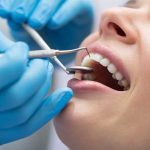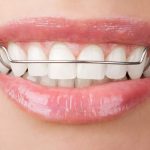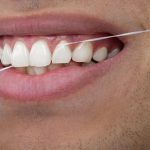Braces Woes: How Long Can You Expect Loose Teeth?

When you get braces, you’re making a long-term investment in the health and appearance of your teeth. Braces can help straighten crooked teeth, close gaps, and correct overbites, underbites, and other alignment issues. But as many people who have had braces can attest, the process can be uncomfortable, and even painful at times. One of the most common concerns people have when getting braces is how long they can expect to have loose teeth. In this article, we’ll explore the reasons why teeth become loose during the braces process, how long you can expect them to stay that way, and what you can do to minimize discomfort and speed up the process. When you first get braces, your orthodontist will apply gentle, steady pressure to your teeth in order to move them into the desired position. While this pressure is necessary for the braces to work, it can also cause the teeth to become slightly loose. This is because the ligaments that hold your teeth in place are being stretched and adjusted to accommodate the new positioning. While it’s normal to feel some looseness in your teeth during the braces process, it can be alarming for some people. However, it’s important to remember that this is a normal part of the process, and that the teeth will eventually stabilize once they have settled into their new position.
Braces are orthodontic devices that are used to correct a variety of dental issues such as crooked teeth, overcrowding, and misaligned bites. The purpose of braces is to apply gentle yet constant pressure to the teeth, which gradually moves them into their correct position over time. Braces consist of brackets that are attached to each tooth, and wires that connect the brackets. Additionally, rubber bands may be used to apply additional pressure to specific teeth or areas of the mouth. While braces can be uncomfortable and require some adjustments to your diet and oral hygiene routine, they can ultimately provide a lifetime of benefits in terms of improved dental health and a more confident smile. However, one common issue that many people experience during the course of braces treatment is loose teeth, which can be concerning and uncomfortable.
During braces treatment, loose teeth are a common problem that patients may experience. This happens because the braces are designed to gradually shift the teeth into their correct positions, which requires the roots of the teeth to move within the bone. As a result, the ligaments that connect the teeth to the bone become stretched, causing the teeth to feel loose. This can be a concerning issue for patients, however, it is important to note that it is a normal part of the orthodontic process. The amount of time that teeth remain loose will vary from person to person, but typically lasts for a few days to a week. It is important to maintain good oral hygiene and avoid hard or sticky foods during this time to prevent any further damage to the teeth.
Why do teeth become loose during braces?

During the process of getting braces, teeth may become loose due to the movement of teeth and the pressure applied to them. Braces work by gradually shifting teeth into their desired position by applying constant, gentle force. This force causes the bone around the teeth to break down and rebuild in a new position, allowing the teeth to move. As a result, the teeth become loose as they adjust to the pressure applied by the braces. The degree of looseness can vary depending on the individual and the type of braces used, but it is a normal part of the orthodontic process. It is important to note that while loose teeth during braces are normal, there are certain precautions to take to avoid further damage. Patients should avoid hard, crunchy, or sticky foods that can cause additional stress on the braces and teeth. Brushing and flossing regularly is also crucial to reduce the risk of gum disease and decay. Additionally, patients should avoid playing sports or other physical activities that may cause trauma to the mouth. With proper care and regular check-ups with the orthodontist, the teeth will eventually become securely positioned in their new location, resulting in a beautiful, straight smile.
Braces are orthodontic devices that work by applying constant pressure to the teeth, which in turn stimulates bone remodeling. This is achieved through the use of brackets, which are bonded to the teeth, and archwires, which are threaded through the brackets and exert pressure on the teeth. The brackets act as anchors, holding the archwire in place and allowing it to push or pull the teeth in a particular direction. In addition to the brackets and archwires, braces may also include elastic bands or springs, which provide additional force to move teeth in a specific direction. Over time, as the teeth move, the bone around them remodels to support their new position, resulting in a straighter, more aligned smile. While the process of moving teeth with braces can be uncomfortable and even painful at times, the end result is a beautiful, healthy smile that can last a lifetime.
Orthodontic treatment involves applying pressure to the teeth to move them into their correct positions. This movement is achieved through the use of braces, wires, and rubber bands. While the movement of the teeth is necessary to achieve a straighter, more aligned smile, it can also cause the teeth to become loose. As the teeth are shifted into new positions, the ligaments and tissues that hold them in place are stretched and repositioned. This process can cause the teeth to feel loose or wobbly, which can be uncomfortable and even alarming for some patients. However, this is a normal part of the orthodontic process and typically resolves on its own as the teeth become more securely anchored in their new positions.
How long can you expect your teeth to be loose?

When it comes to braces, one of the most common concerns is the looseness of teeth. It’s a natural and expected process when wearing braces, but it can be unsettling for some people. The good news is that tooth mobility is a sign that the braces are doing their job correctly. Braces apply pressure to the teeth, which gradually shifts them into their proper position. The movement of teeth is possible because of the elasticity of the periodontal ligament that connects the teeth to the jawbone. Although tooth mobility can be a bit uncomfortable, it’s not a cause for alarm. The duration of the looseness depends on various factors, such as the severity of the case, the type of braces, and the individual’s healing process. Typically, teeth can be loose for a few days to a few weeks after braces are first applied or adjusted. During this time, it’s essential to maintain good oral hygiene practices and avoid hard, sticky, or chewy foods that can damage the braces or the teeth. It’s also vital to follow the orthodontist’s instructions carefully to ensure the best possible outcome. With patience and care, the teeth will eventually stabilize and become firmly anchored in their new positions.
The timeline for braces treatment can vary depending on the individual case, but generally, the process takes between 18 to 36 months. During the first few months, the braces are gently tightening the teeth to move them into the desired position. This can cause some discomfort or soreness, but it’s normal. As the teeth shift, they become looser in their sockets, making them more susceptible to movement. This is when the orthodontist will make adjustments to continue the teeth’s movement until they reach their final position. Typically, the teeth are most loose after about six to eight months of braces treatment. However, it’s important to note that each person’s teeth and treatment plan are unique, so the timeline may vary.
After getting braces, it is common for teeth to become loose and shift as they adjust to the new positioning. This can be concerning for patients who are worried about their teeth becoming permanently damaged or falling out. However, it is important to note that teeth have a remarkable ability to stabilize and become firm again. The length of time it takes for teeth to fully stabilize can vary depending on the individual case, but it typically takes several months to a year for the teeth to settle into their new position. During this time, it is important to continue practicing good oral hygiene and following the orthodontist’s instructions to ensure the best possible outcome.
What can you do to alleviate loose teeth?
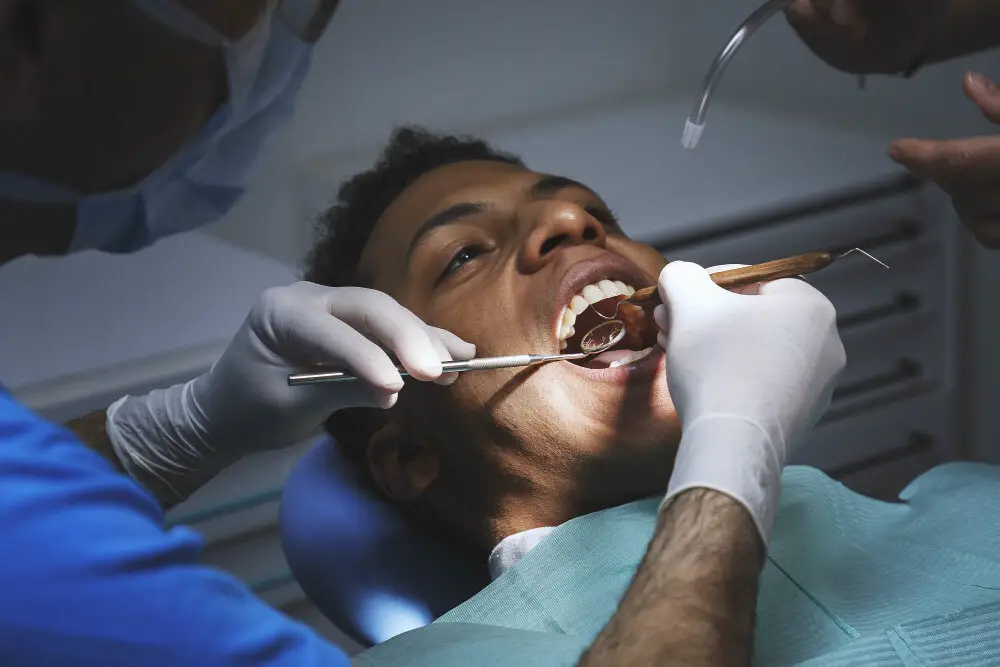
Loose teeth can be quite a troublesome issue, especially when you are wearing braces. However, there are certain things that you can do to alleviate the problem. The first and foremost thing that you should do is to maintain good oral hygiene. Brush your teeth twice a day and floss regularly. This will help keep your teeth and gums healthy and prevent any infections that may cause your teeth to become loose. Additionally, try to avoid hard and sticky foods that can damage your braces and cause your teeth to become loose. Instead, opt for soft foods that are easy to chew and won’t put too much pressure on your braces. Another thing that you can do to alleviate loose teeth is to wear a mouthguard. A mouthguard can help protect your teeth from any accidental blows or impacts that may cause them to become loose. Additionally, if you are engaging in any sports or other physical activities, make sure to wear a mouthguard to protect your teeth. Lastly, be sure to visit your orthodontist regularly for check-ups and adjustments. Your orthodontist will be able to monitor your progress and make any necessary adjustments to your braces to ensure that your teeth are moving in the right direction and that they are not becoming loose. By following these simple steps, you can alleviate loose teeth and ensure that your braces treatment is a success.
Dealing with loose teeth during braces treatment can be a daunting task, but with a few tips and tricks, you can ease the discomfort and ensure a successful outcome. Firstly, avoid eating hard or sticky foods that can further loosen the teeth and cause pain. Instead, opt for soft foods such as mashed potatoes, soups, and smoothies. Secondly, use a soft-bristled toothbrush and brush gently to avoid aggravating the loose teeth. Thirdly, rinse your mouth with saltwater to reduce inflammation and promote healing. Lastly, if the discomfort persists, consult your orthodontist who may offer additional remedies such as wax or braces adjustment to alleviate the discomfort. With these tips, you can navigate the challenges of loose teeth during braces treatment and achieve a beautiful and healthy smile.
Proper oral hygiene is crucial for maintaining healthy teeth and gums, especially when undergoing orthodontic treatment. Neglecting to brush and floss regularly can lead to bacteria buildup, which can cause tooth decay, gum disease, and even damage to the braces themselves. Additionally, following your orthodontist’s instructions is essential for achieving successful treatment outcomes. Failure to wear rubber bands, headgear, or other prescribed appliances as directed can prolong treatment time and even result in the need for additional procedures. It is important to understand that orthodontic treatment is a partnership between the patient and the orthodontist, and following instructions and maintaining good oral hygiene habits are key components for achieving a beautiful, healthy smile.
When should you be concerned about loose teeth?
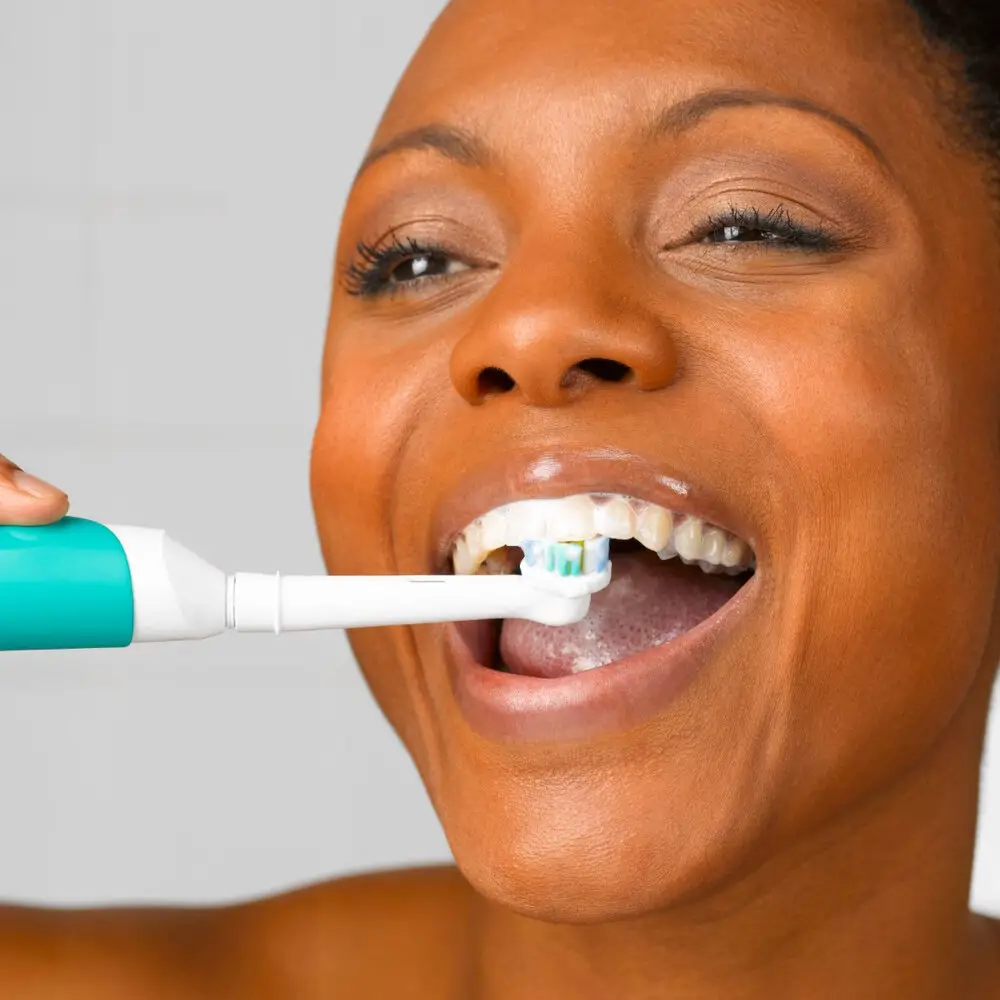
Loose teeth can be a common occurrence, especially in children and adolescents who are undergoing orthodontic treatment with braces. However, loose teeth can also indicate a more serious underlying issue that requires attention. If you notice that your teeth are becoming increasingly loose, it is important to consult with your dentist or orthodontist to determine the cause and appropriate treatment. Loose teeth can be a sign of gum disease, which can lead to tooth loss if left untreated. Other potential causes of loose teeth include injury or trauma to the mouth, tooth decay, or an underlying medical condition. It is also important to note that while some degree of tooth mobility is normal during orthodontic treatment, excessive looseness can be a cause for concern. If your teeth are so loose that they are noticeably shifting or moving, this could indicate that your braces are not properly adjusted or that there is an issue with your orthodontic treatment plan. In this case, it is essential to schedule an appointment with your orthodontist as soon as possible to address the issue and prevent further damage to your teeth and gums. Ultimately, being proactive about addressing loose teeth can help to ensure the long-term health and integrity of your smile.
During braces treatment, loose teeth are a common occurrence as the teeth shift and move into their new positions. However, if the teeth are excessively loose or if they remain loose for an extended period of time, it may be cause for concern. Excessive looseness may indicate that the roots of the teeth have been damaged or that the bone supporting the teeth has been compromised. In some cases, it may also suggest that the braces are putting too much pressure on the teeth, causing them to become unstable. If you experience any of these symptoms, it is important to consult your orthodontist as soon as possible to avoid further damage and ensure that your treatment stays on track.
It is crucial to communicate with your orthodontist and seek their advice when you experience any discomfort or concerns while wearing braces. Your orthodontist has the expertise and knowledge to address any issues that may arise during your orthodontic treatment. They can guide you on how to manage discomfort, provide tips on oral care, and adjust your treatment plan if necessary. Ignoring any discomfort or concerns can lead to serious dental problems and prolong the duration of your orthodontic treatment. Therefore, it is essential to maintain regular communication with your orthodontist and seek their advice for a successful and comfortable orthodontic journey.
The article titled \Braces Woes: How Long Can You Expect Loose Teeth?\ discusses the common concern of patients who wear braces and experience loose teeth. The article explains that it is normal for teeth to feel loose when wearing braces, as the braces are designed to shift teeth into the correct position. However, the article also notes that excessive movement or looseness can indicate a problem with the braces or the treatment plan. The article advises patients to consult their orthodontist if they experience significant discomfort or if their teeth remain loose for an extended period of time. Overall, the article provides helpful information for patients who are undergoing orthodontic treatment and may be experiencing loose teeth as a result.
If you are experiencing loose teeth during your braces treatment, it is important to remember that this is completely normal. As your teeth shift and move into their proper positions, your braces are doing their job. It is common to feel some discomfort or even see a little bit of movement in your teeth. However, rest assured that this is temporary and your teeth will eventually stabilize in their new positions. It is important to continue with your regular dental hygiene routine and follow your orthodontist’s instructions to ensure the best possible outcome. Remember, the end result of a beautiful, straight smile is worth the temporary discomfort you may be feeling.
While this article aims to provide helpful information and insights about the common concern of loose teeth during braces treatment, it is important to note that every individual’s orthodontic journey is unique. Factors such as age, dental history, and treatment plan can significantly affect the timeline and outcome of orthodontic treatment. Therefore, it is strongly encouraged for readers to consult with their orthodontist for personalized advice and guidance. Your orthodontist is the best person to evaluate your specific condition, address any concerns, and provide tailored recommendations to ensure a successful and comfortable experience with braces. Don’t hesitate to reach out to your orthodontist for support and guidance throughout your treatment journey.
Conclusion
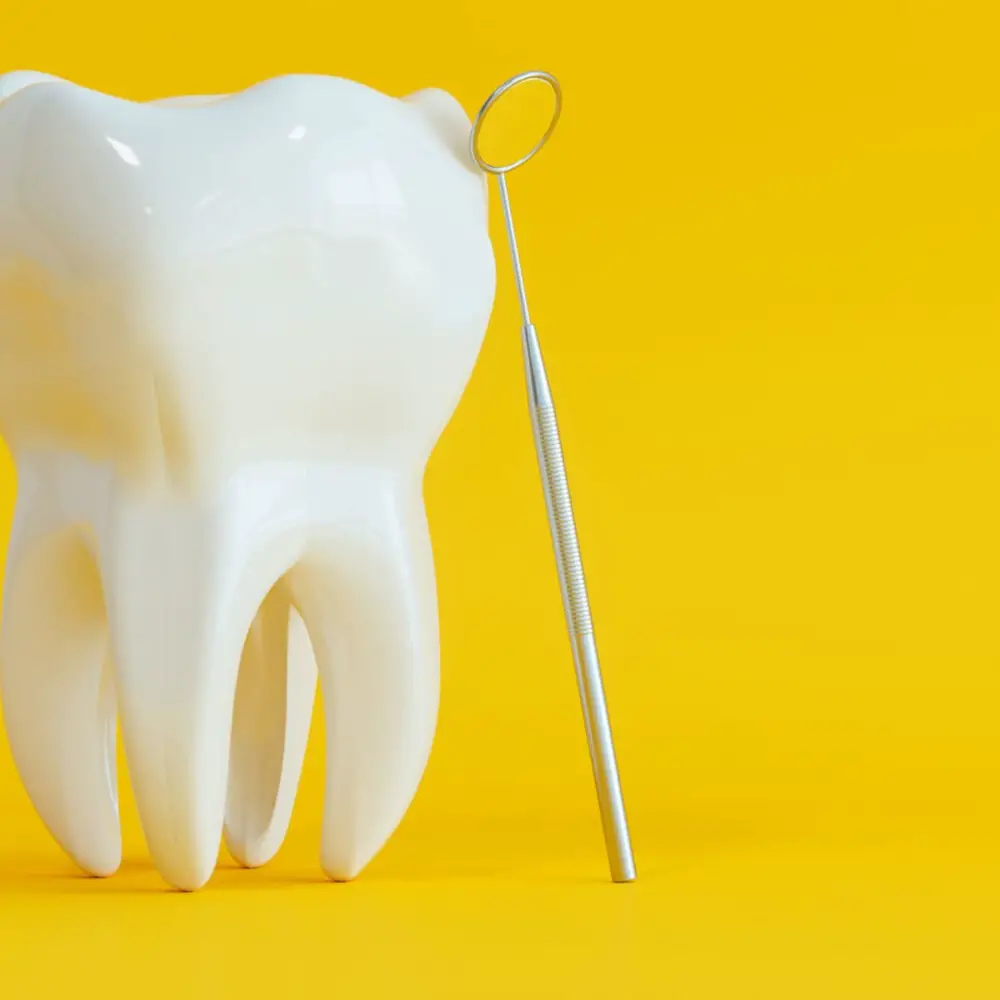
In conclusion, getting braces can be an effective solution for aligning crooked teeth and improving one’s smile. However, it’s common to experience loose teeth during the treatment process. While this can be concerning, it’s a normal part of the teeth straightening process. The duration of loose teeth can vary from person to person, but generally, it can last for a few weeks to a few months. It’s essential to follow proper oral hygiene practices and avoid eating hard or sticky foods during this time to prevent further damage. Additionally, it’s crucial to keep up with regular appointments with your orthodontist to ensure that your treatment is progressing as expected. Overall, with patience and proper care, loose teeth during braces treatment should not cause significant long-term problems and can lead to a beautiful and healthy smile.
